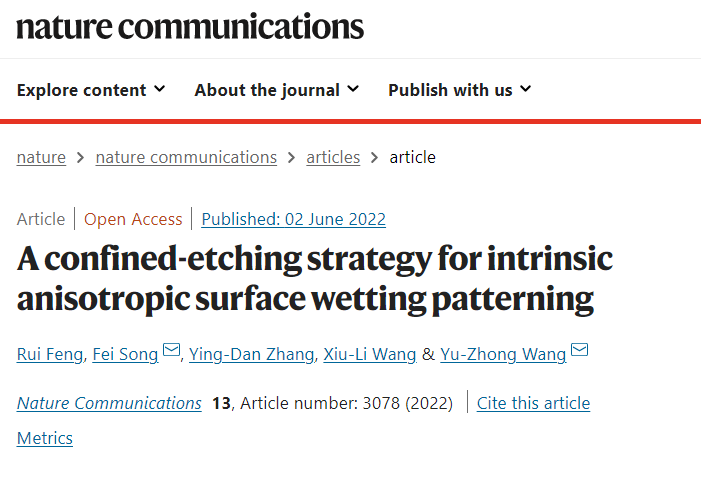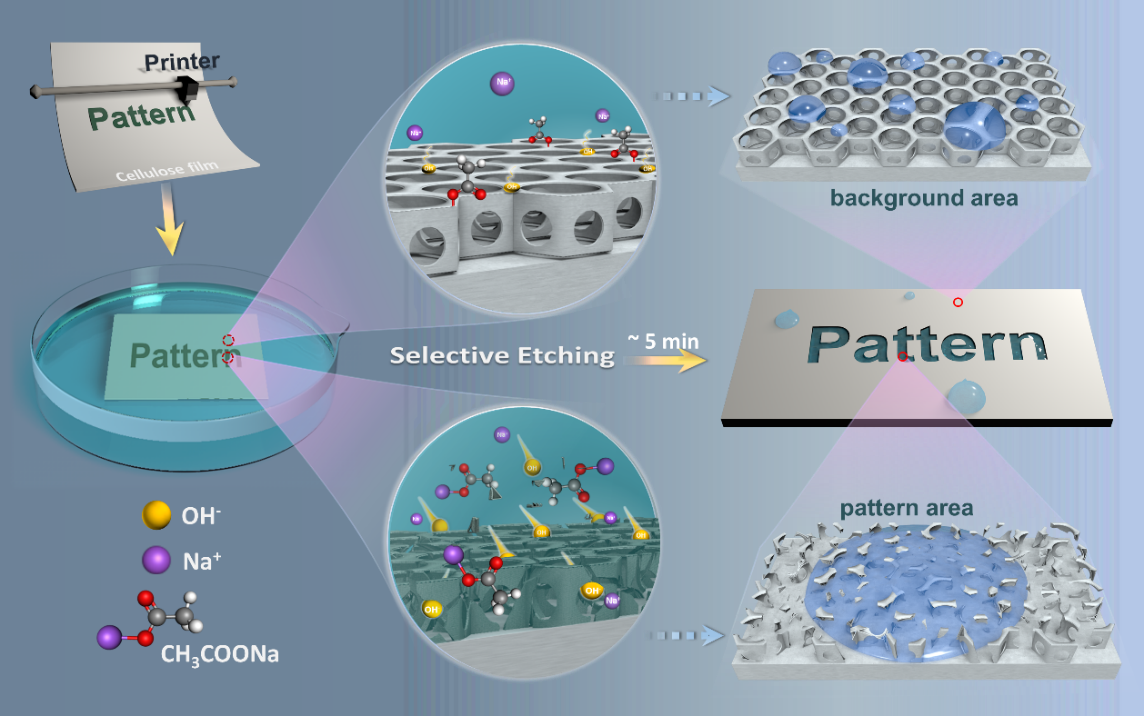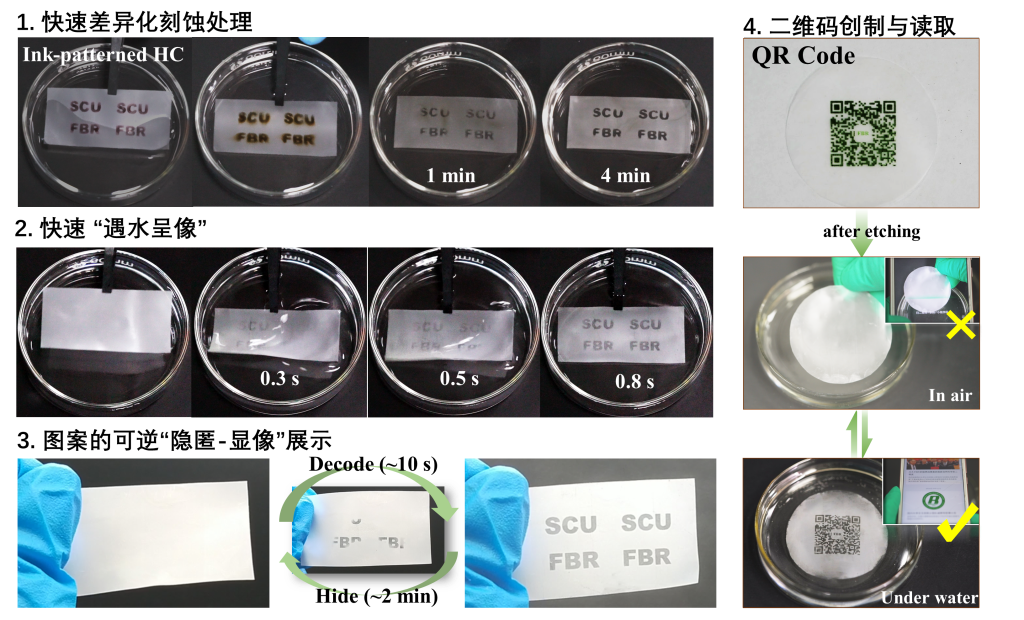On June 2, , Yuzhong Wang(academician of CAE) and Professor Fei Song of theCollege of Chemistrypublished a research paper entitled “A Confined-Etching Strategy for Intrinsic Anisotropic Surface Wetting Patterning” (Nat. Common. 2022, 13, 3078) in Nature Communications. Sichuan University is the only signatory of the thesis. The first author is Rui Feng, a Class 2019 doctoral student ofthe Collaborative Innovation Center for Eco-Friendly and Fire-Safety Polymeric Materials (MOE); Yuzhong Wang and Fei Song are the corresponding authors.Relevant findings have applied for and obtained invention patent ZL 202110570617.7.

Anisotropic surface wetting patterninginspired by natural organisms have made great progress in recent years. However, the preparation of accurate and complex patterns often depends on photolithography, plasma etching, femtosecond laser and other means, involving the use of expensive consumables such as photoresist and photomask, which limits the development and application of such surfaces.
The Collaborative Innovation Center for Eco-Friendly and Fire-Safety Polymeric Materials (MoE), founded by Yuzhong Wang, has long been engaged in basic and applied research on bio based and biodegradable polymer materials. “Here, we report a facile and fast mask-free etching method for accurate surface patterning by controlling the confined decomposition of material surfaces ---. With a common printing technique and subsequent location-confined chemical etching, intrinsic, complex and accurate patterns with a resolution of 200 μm are fabricated (such as QR code). In particular, an etching processing window is established for information storage and encryption.”(Introduction)

Fabrication strategy of accurate patterns with anisotropic wettability.

A QR code ink-printed on HC film before NaOH-treatment and the reading process of the hidden QR code after NaOH-treatment.
“Anisotropic functional patterned surfaces have shown significant applications in microfluidics, biomedicine and optoelectronics. However, surface patterning relies heavily on high-end apparatuses and expensive moulds/masks and photoresists. Decomposition behaviors of polymers have been widely studied in material science, but as-created chemical and physical structural changes have been rarely considered as an opportunity for wettability manipulation. Here, a facile mask-free confined-etching strategy is reported for intrinsic wettable surface patterning. With printing technology, the surface wetting state is regulated, enabling the chemical etching of setting locations and efficient fabrication of complex patterns. Notably, the created anisotropic patterns can be used for realizing water-responsive information storage and encryption as well as fabricating flexible electrodes. Featuring advantages of simple operation and economic friendliness, this patterning approach brings a bright prospect in developing functional materials with versatile applications.” (Abstract)
This work was supported by the National Natural Science Foundation of China (U21A2096 to F.S.), and so forth.
https://doi.org/10.1038/s41467-022-30832-4
